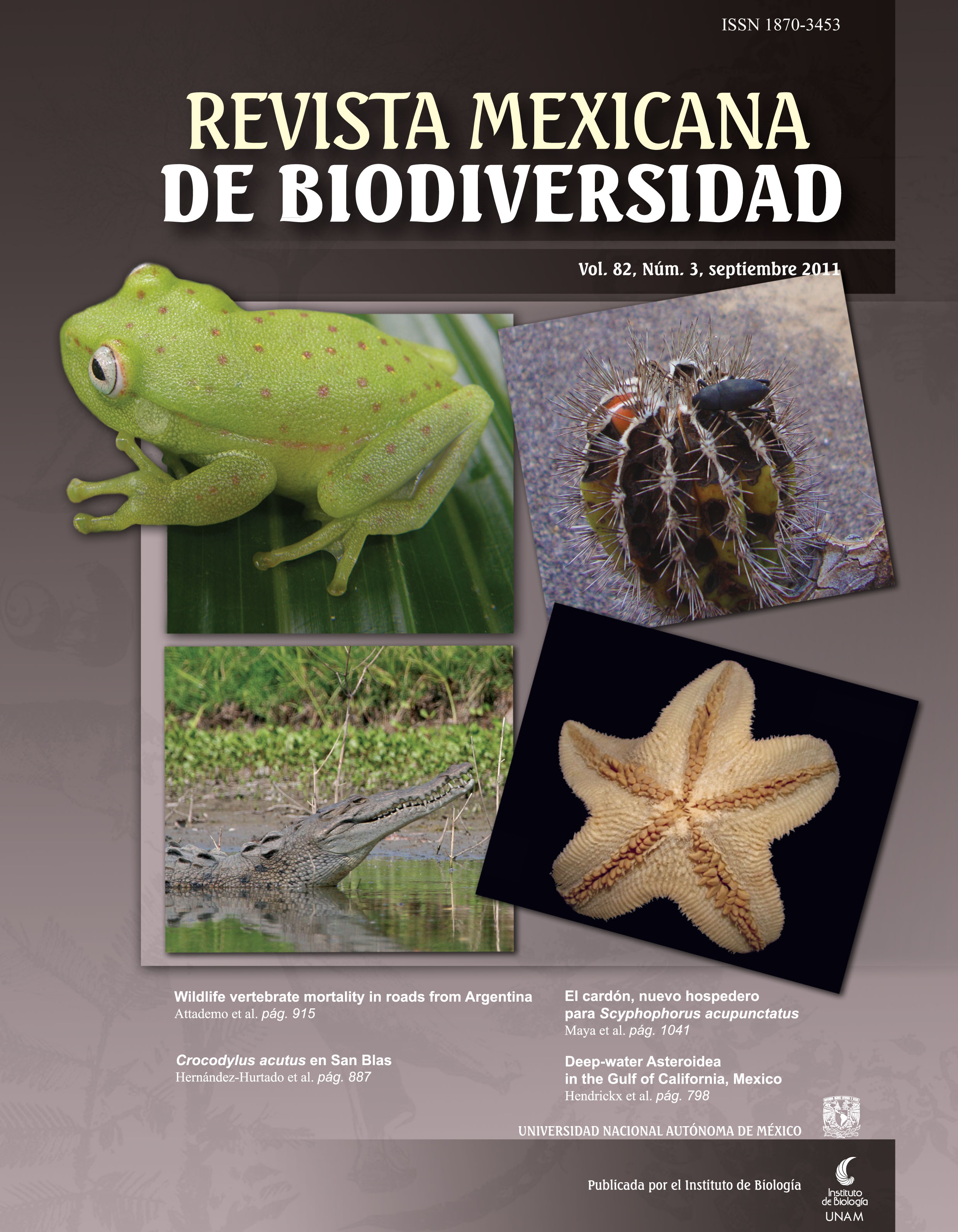Phytogeographic analysis of the genus Datura (Solanaceae) in continental Mexico
DOI:
https://doi.org/10.22201/ib.20078706e.2011.3.720Palabras clave:
clustering, Datura, geographic distribution, Mexico, ordination, biogeographic provincesResumen
The geographic distribution of the species of Datura in Mexico was analyzed using numerical analysis ofnatural populations documented by herbarium specimens. A map of Mexico was divided into 239, 1° x 1° squares
(latitude and longitude) which were used as sampling geographical units and in which the presence or absence of
each species of Datura was recorded. Multivariate procedures were applied: a), TWINSPAN classification to define
Datura´s main distribution areas; b), Detrended Correspondence Analysis (DCA) to define Datura´s main distribution
gradients, and c), Canonical Correspondence Analysis (CCA) to relate distribution patterns with geographical and
climatic factors. Species of Datura were found in 69% (165) of the squares. TWINSPAN defined 14 groups which,
when associated with Mexico’s biogeographic provinces, were concentrated in the northwestern Mexican provinces
as well as in the Altiplano Norte and Altiplano Sur and the Sierra Madre Occidental. DCA indicated that Datura’s
main distribution patterns are explained by 3 principal gradients: altitude, humidity, and latitude. The CCA identified
longitude, precipitation of the driest quarter, altitude, and average temperature of the warmest quarter as the most
important variables affecting Datura´s distribution patterns. The Depresión del Balsas region of central Mexico is the
area with greatest species richness of Datura.




